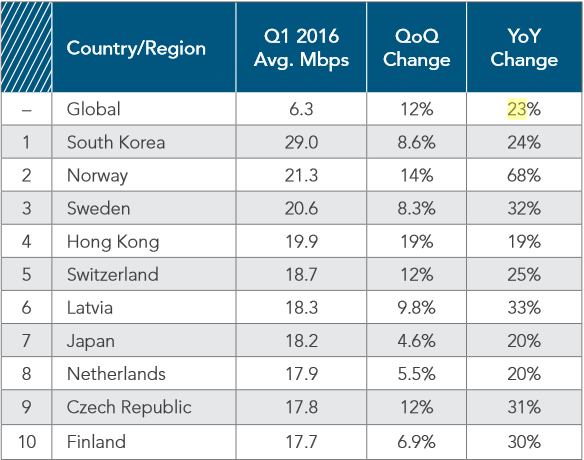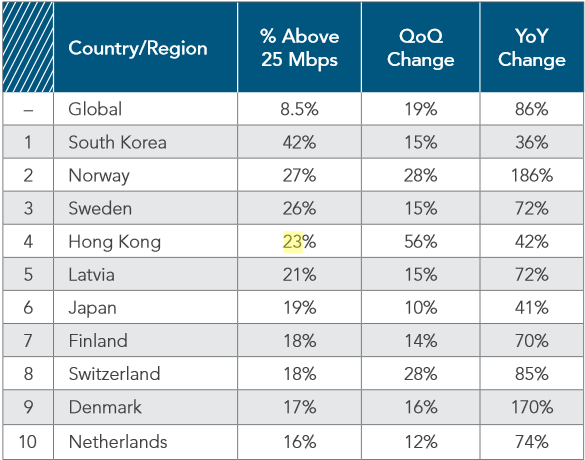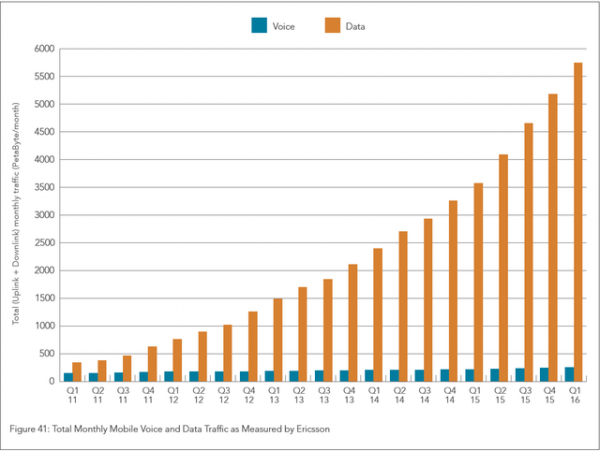In the first quarter, the global average network speed increased by 23% to 6.3Mbps
In the first quarter of 2016, the global average network connection speed increased by 23% year-on-year to 6.3Mbps. Moreover, 8.5% of the world's users have broadband speeds of at least 25.0Mbps.
These statistics are from CDN service provider Akamai, which has just released its quarterly State of the Internet Report.
The report shows that the average network connection speed of 138 countries in the world has increased year on year, ranging from 0.5% in Suriname to 298% in Kenya. The average network connection speed in eight countries declined year on year, ranging from 1.5% in Gabon (down to 1.8 Mbps) to 23% in Syria (down to 1.4 Mbps).
From the chart below, you can see that the top 10 countries or regions have increased month on month and year on year.

In January 2015, the Federal Communications Commission (FCC) of the United States again raised the threshold of broadband from 4 Mbps download speed to 25 Mbps. Globally, the penetration rate of 4 Mbps and above increased by 16% year-on-year to 73%. The penetration rate of 10 Mbps and above increased by 34% year-on-year to 35%. The penetration rate of 15 Mbps and above increased by 58% year-on-year, It increased to 21%.

Most importantly, the penetration rate of 25 Mbps and above (which is the broadband speed currently defined by the United States) increased by 86% year on year, to 8.5%. The penetration rate of the top 10 countries reached two figures; The top five countries can claim that one in every five of their citizens has broadband speed.
In previous reports, Akamai also mentioned the mobile traffic data collected by Ericsson. Ericsson now has business in more than 180 countries around the world, and its user base covers more than 1000 networks. According to Ericsson's statistics, mobile data traffic increased 9.5% month on month and 60% year on year.

Mobile voice traffic remains unchanged, but mobile data traffic is still growing steadily. The growth of mobile data traffic is due to the growth of the number of mobile devices and the growth of average data traffic, which is mainly due to the increase of videos watched by mobile users. In the short term, the growth of mobile data traffic will not enter the bottleneck period.


